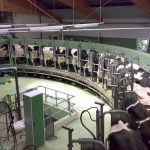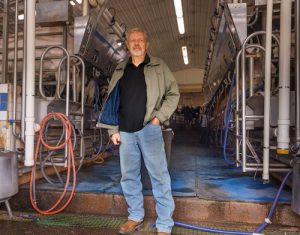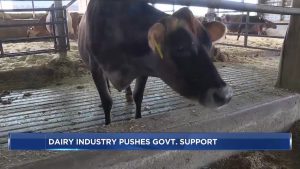
According to the U.S. Department of Agriculture’s World Ag Supply and Demand Estimates report released July 13, nationwide diary production is expected to rise by 1.5% in 2022, while market rates are more a mixed bag. In the USDA’s look ahead to 2022, projections of milk production clock in at 231.6 billion pounds, an increase of 500 million pounds from June as cow numbers grow across the country.
There are also anecdotal indications that the dairy industry is in a good position. Generally speaking, Wisconsin dairy farms have emerged from the worst of the pandemic stronger than expected, buoyed by billions in federal aid, as well as robust demand both stateside and on the international stage.
In addition, government programs tailored for smaller farms, coupled with market trends, are a particular boon for the Wisconsin dairy industry.
“The industry’s ability to adapt and change with market fluctuations and COVID, so to say that we are doing as well as we are, considering what we just came out of?” said Tim Trotter, executive director of the Dairy Business Association and Edge Dairy Farmer Cooperative.
“I think it’s a shining star for dairy. I think global markets see a lot to be admired in the United States’ (dairy producers).”
The dairy industry is in a dynamic state of flux — much as it has been for years — but the market is stabilizing after high price volatility during the pandemic, Trotter said. That means opportunities for farmers to build on.
Higher rates of production are tied to stronger farms, said Matt Lippert, a dairy livestock agent with UW-Extension in Clark ad Wood counties, as farmers have the resources to purchase more cattle. This spending power has been beefed up by federal aid, both in terms of financial support as well as government-mandated bulk purchases.
This could have some some repercussions in the market, he noted. Standard production growth is about 1% from year to year. If it increases past that point substantially, Lippert said, the market could become saturated, surpass demand and drive down prices, thereby decreasing profits.
Still, the signs are positive and much of the demand for dairy — both here and abroad — isn’t tied to artificial measures by the U.S. government. Lippert and Trotter said American consumers are spending more for milk, cheese, yogurt and other dairy products since the advent of COVID-19.
That and the United States dairy industry is making headway against competitors in Europe, Latin America and Oceania, said Lippert, who pointed to figures that exports account for roughly 18% of all American dairy production per month. This is in line with gradual upward trends over the last few decades, long before COVID-19 ever hit the scene.
“We’ve been dependably growing, maybe not month to month or year to year, but we’ve been growing,” Lippert said. “If you go back 20 years, we were hardly a net exporter at all in this country. Now, we’re consistently at 14% or 15% or now 18%.”
“Most farmers had a better year last year than they’ve had in quite a while, probably in five years,” Lippert added. “The government was a part of that, but I think the demand for dairy products has shifted. We had good demand in this country and also internationally.”
If there is one thing to keep an eye on, it’s climate change, Lippert and Trotter said, particularly in terms of drought and how it’ll affect dairy farms. Wisconsin agriculturists have to look no farther than the American west, where the need for water rationing this year could spell upheaval in the industry in coming years.
“Every year, we’re seeing that there’s different parts of the country, some that are booming, others that are doing poorly {span}—{/span} so a lot of erratic production,” Lippert said. “We’ve had exceptional heat, heat that they’ve never seen. We expect that even if we turn in a pretty good yield in the eastern part of the country, that we could taper off and take a step back (as a national dairy industry).”

























